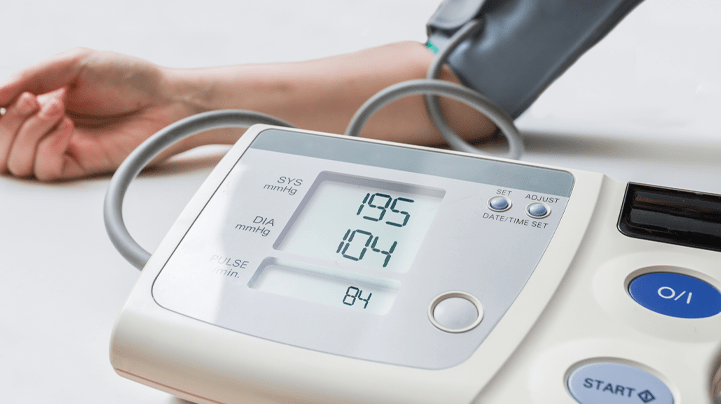Wybierz język:
Wywiad z Roberto Fontaną – Global Product Specialist w Immunodiagnostic Systems (IDS)
Nadciśnienie tętnicze to powszechny problem zdrowotny – cierpi na nie 30% dorosłej populacji, a u 15–20% spośród tych pacjentów może być ono spowodowane zaburzeniami endokrynologicznymi. Jednym ze schorzeń prowadzących do tego rodzaju nadciśnienia jest pierwotny aldosteronizm (PA), który charakteryzuje się nadmiernym wydzielaniem aldosteronu. Jakie są główne funkcje aldosteronu w ludzkim organizmie?
Aldosteron jest zaangażowany – jako część układu renina–angiotensyna–aldosteron – w utrzymanie homeostazy krążenia. W odpowiedzi na spadek ciśnienia krwi lub utratę soli i wody aldosteron jest uwalniany z kory nadnerczy do nerek, gdzie w dystalnym nefronie zwiększa reabsorpcję sodu i wydalanie potasu. Ze względu na to, że sód jest najważniejszym jonem regulującym płyn pozakomórkowy, następuje zwiększenie objętości i ciśnienia krwi. Pierwotny aldosteronizm – zwany także zespołem Conna – charakteryzuje się nadmiernym wydzielaniem aldosteronu, powodując utrzymujący się wzrost ciśnienia krwi.
Czym jest renina i w jaki sposób wpływa na regulację ciśnienia krwi? Jakie testy diagnostyczne są zalecane, gdy podejrzewa się pierwotny aldosteronizm? Dlaczego pomiar stosunku aldosteronu do reniny (ARR) jest tak istotny w procesie diagnostycznym?
Renina to enzym uwalniany przez nerki w odpowiedzi na różne bodźce, z których jeden to spadek ciśnienia krwi. Aktywność enzymatyczna reniny polega na przekształceniu krążącego peptydu angiotensynogenu do angiotensyny I. W kolejnym etapie jest ona dalej przekształcana w angiotensynę II – czynnik silnie zwężający naczynia krwionośne, który, powodując ich skurcz, zwiększa ciśnienie krwi. Oprócz działania zwężającego naczynia angiotensyna II jest głównym stymulatorem uwalniania aldosteronu.
Dlatego wydzielanie reniny inicjuje przywracanie „normalnego” ciśnienia krwi na dwa sposoby. Pierwszym jest zwężenie naczyń na skutek działania angiotensyny II. Drugi to angiotensyno-zależne uwalnianie aldosteronu, które prowadzi do zwiększenia reabsorpcji sodu, co ostatecznie przekłada się na wzrost objętości i ciśnienia krwi.
W pierwotnym aldosteronizmie aldosteron jest wydzielany niezależnie od ciśnienia krwi i poziomów stymulacji angiotensyną lub zależność ta jest niewielka. Aldosteron powoduje wzrost ciśnienia krwi, a wysokie ciśnienie krwi hamuje uwalnianie reniny z nerek. W rezultacie pierwotny aldosteronizm charakteryzuje się wysokimi stężeniami aldosteronu przy niskich stężeniach reniny we krwi. Dlatego najważniejszym testem przesiewowym zalecanym przy podejrzeniu pierwotnego aldosteronizmu jest badanie stosunku aldosteronu do reniny (ARR, ang. aldosterone-to-renin ratio). Stosunek ten można obliczyć zarówno w oparciu o stężenie reniny w osoczu (PRC, ang. plasma renin concentration), jak i na podstawie aktywności reniny w osoczu (PRA, ang. plasma renin activity) ocenianej jako tempo konwersji angiotensynogenu do angiotensyny I in vitro. W obu przypadkach ARR wykazuje bardzo wysoką czułość i swoistość w skriningu pierwotnego aldosteronizmu.
Jeśli ARR wskazuje na obecność pierwotnego aldosteronizmu, zaleca się wykonanie testu potwierdzającego. Jednym z powszechnie stosowanych testów potwierdzenia jest test infuzji soli fizjologicznej (SIT, ang. saline infusion test), który polega na ocenie stężenia aldosteronu po podaniu pacjentowi roztworu soli fizjologicznej. Brak hamowania wydzielania aldosteronu w odpowiedzi na zwiększenie objętości krwi wskazuje, że proces jego sekrecji jest niezależny od normalnej kontroli fizjologicznej.
Jakie są główne objawy i kliniczne konsekwencje pierwotnego aldosteronizmu?
Nadmierna sekrecja aldosteronu powoduje utrzymujące się i często oporne na leczenie nadciśnienie, co – w dłuższej perspektywie – prowadzi do zwiększenia ryzyka uszkodzeń sercowo-naczyniowych, w tym zawału serca i udaru mózgu. Ze względu na bezpośrednie szkodliwe działanie nadmiaru aldosteronu, uszkodzenia sercowo-naczyniowe w pierwotnym aldosteronizmie są poważniejsze niż te wywołane jedynie podwyższonym ciśnieniem krwi. Warto zauważyć, że choć szacuje się, iż pierwotny aldosteronizm występuje u około 5–10% ogólnej populacji chorych na nadciśnienie, test stosunku ARR jest zlecany tylko w około 3% nowych diagnoz nadciśnienia. Dodatkowo, poprzez zmniejszenie stężenia potasu we krwi aldosteronizm pierwotny hamuje wydzielanie insuliny, przez co jest związany z ryzykiem wystąpienia cukrzycy typu 2.
Jakie produkty oferuje IDS do diagnostyki nadciśnienia endokrynologicznego?
Panel do diagnostyki nadciśnienia endokrynologicznego firmy IDS obejmuje testy do badania aldosteronu (IDS Aldosterone) i reniny (IDS Direct Renin). Służą one do oceny stężenia aldosteronu i reniny w osoczu, umożliwiając przeprowadzenie zarówno przesiewowych testów ARR, jak i potwierdzających testów SIT przydatnych w diagnozie pierwotnego aldosteronizmu. Testy IDS do diagnostyki nadciśnienia endokrynologicznego zapewniają najwyższą precyzję i czułość z możliwością pełnej automatyzacji.
Testy firmy Immunodiagnostic Systems są wykonywane na zautomatyzowanej platformie random access. Jakie korzyści wiążą się z zastosowaniem tej techniki diagnostycznej w porównaniu z innymi?
W pełni automatyczne platformy random access IDS – IDS-iSYS i IDS-i10 zapewniają laboratorium medycznym wymaganą elastyczność w badaniu próbek, umożliwiając natychmiastowe przystąpienie do ich analizy. Dodatkowo, system IDS optymalizuje kolejność przeprowadzanych testów, gwarantując najlepszy czas wykonania badań. Ta funkcjonalność pozwala na optymalizację procesów laboratoryjnych.
Bardzo dziękuję za rozmowę.
Rozmawiał: Tomasz Janiszewski
Advanced Endocrinological Tests by IDS: Innovative Approaches to Diagnosing Hypertension
Interview with Roberto Fontana – Global Product Specialist at Immunodiagnostic Systems (IDS)
Hypertension is a common health issue – 30% of the adult population suffer from hypertension and in 15–20% of these patients it may be due to endocrine causes. One of the diseases that causes this type of hypertension is primary aldosteronism (PA), in which there is excessive secretion of aldosterone. What are the main functions of aldosterone in the human body?
Aldosterone is deputed – as part of the Renin-Angiotensin-Aldosterone system – to the maintenance of the circulatory homeostasis. In response to a decrease of blood pressure or to loss of salt and water, Aldosterone is released from the cortex of the adrenal glands and acts in the kidneys, on the distal nephron, to enhance the reabsorption of sodium and the excretion of potassium. Because sodium is the most important ion regulating the extracellular fluid, the net effect is an increase of blood volume and blood pressure. Primary aldosteronism – or Conn’s syndrome – is characterized by a hypersecretion of aldosterone, causing a sustained increase in blood pressure.
What is renin and how does it affect a blood pressure regulation? What diagnostic tests are recommended when primary aldosteronism is suspected? Why is measuring the aldosterone-to-renin ratio (ARR) important in the diagnostic process?
Renin is an enzyme released by the kidneys in response to a number of stimuli, one of which is the fall in systemic blood pressure. The enzymatic activity of renin consists in cleaving the circulating peptide angiotensinogen into angiotensin I. This is then further processed into angiotensin II, a strong vasoconstrictor: it shrinks blood vessels thereby increasing blood pressure. Along with its vasoconstricting activity, angiotensin II a major stimulator of aldosterone release.
Therefore, the secretion of renin triggers the restoration of normal blood pressure in two ways. The first is by eliciting the vasoconstricting activity of angiotensin II. The second is via the angiotensin-mediated release of aldosterone, which drives an increase in sodium reabsorption, ultimately translating into an increase in blood volume and blood pressure.
In primary aldosteronism, aldosterone is secreted with limited or no control exerted by the blood pressure and by the levels of angiotensin stimulation. While on one hand aldosterone drives an increase in blood pressure, high blood pressure in turn inhibits the release of renin from the kidneys. Consequently, primary aldosteronism features high concentrations of aldosterone coupled with low concentrations of renin in the blood. Indeed, whenever primary aldosteronism is suspected, the most important screening test recommended is the aldosterone-to-renin ratio (ARR). The ratio can be calculated using either plasma renin concentration (PRC) or plasma renin activity (PRA) assessed as the rate of conversion of angiotensinogen to angiotensin I in vitro. In either case, the ARR has proven a very high sensitivity and specificity in the screening for primary aldosteronism.
If the ARR is positive for primary aldosteronism, then a confirmatory test is recommended. A common one is the saline infusion test (SIT), which involves the administration of saline solution to the patient, followed by the assessment of aldosterone. The lack of plasma aldosterone suppression in response to volume expansion indicates that its secretion is out of the physiological control.
What are the main symptoms and clinical consequences of primary aldosteronism?
The excess secretion of aldosterone causes sustained and often resistant hypertension, which – on the long term – leads to increased probabilities of cardiovascular damage, including myocardial infarction and stroke. In primary aldosteronism, the degree of cardiovascular damage is greater than that attributable to the elevation of blood pressure, because of the direct detrimental effects of aldosterone excess. It is worth noting that while the prevalence of primary aldosteronism is estimated around 5–10% in the overall hypertensive population, the ARR ratio test is ordered in only about 3% of the new diagnosis of hypertension. Additionally, primary aldosteronism is also associated with type 2 diabetes, mediated via the decrease in plasma potassium that prevents insulin secretion.
What products does IDS offer for endocrine hypertension testing?
The IDS Endocrine Hypertension panel includes the IDS Aldosterone and the IDS Direct Renin assays for assessment of Aldosterone and Renin concentration in plasma, which enable to perform both the ARR screening and the SIT confirmatory tests for the diagnosis of primary aldosteronism
The IDS Endocrine Hypertension panel ensure excellent accuracy, precision and sensitivity. But most importantly, they combine into a most comprehensive automated offering on the market for the screening of endocrine hypertension.
Immunodiagnostic Systems’ tests are based on a Random Access automated platform. What advantages do such devices exhibit compared to other diagnostic techniques?
The random-access capability of the IDS-iSYS and IDS-i10 automated platforms provides the medical laboratory with the required flexibility in sample testing so to streamline the laboratory workflow, while the IDS system optimizes the order of the tests online, ensuring the best turn-around time.
Thank you very much for the interview!
Interviewer: Tomasz Janiszewski

Tomasz Janiszewski
Specjalista ds. Informacji Naukowej, Product Manager ds. Diagnostyki Molekularnej i Produktów IDS





